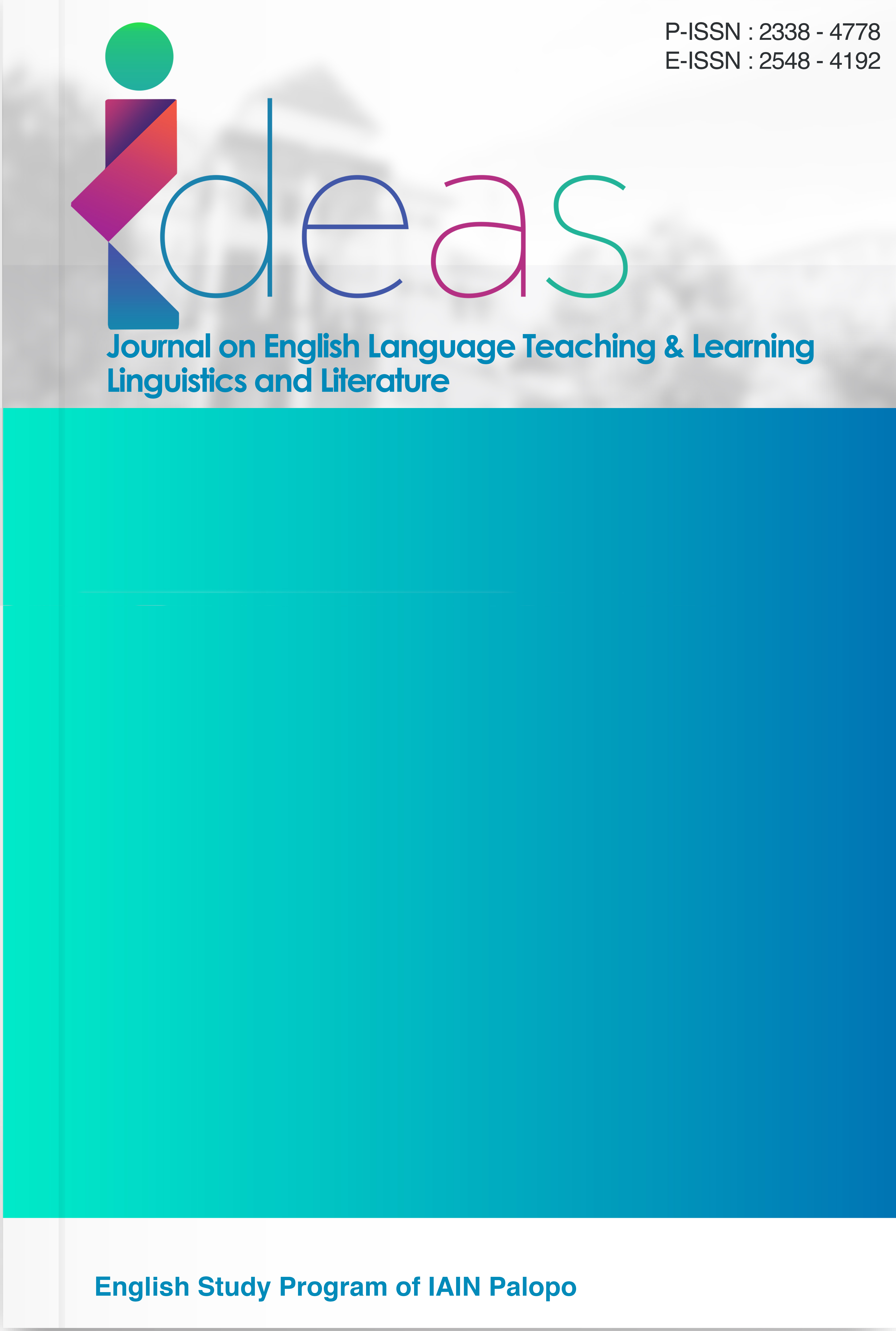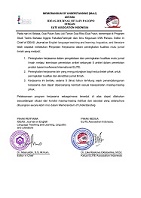Affective Domain and Foreign Language Learning: A Bibliometric Analysis
DOI:
https://doi.org/10.24256/ideas.v13i2.6718Keywords:
affective domain, foreign language, learning; language learning, SLAAbstract
The affective domain, which includes emotions, motivation, attitudes, and values, plays a crucial role in shaping learning outcomes in foreign language education. Yet, much of the existing research investigates these factors in isolation, providing only a limited understanding of how they interact and influence second language acquisition as a whole. This study aims to map the evolution of research on the affective domain in foreign language learning from 2019 to 2023 through a comprehensive bibliometric analysis. Data were retrieved using the Publish or Perish software with Google Scholar as the database, yielding 231 publications. After applying defined inclusion and exclusion criteria, 149 documents were retained for analysis, consisting of 121 journal articles and 28 books. Bibliographic information was managed with Mendeley Reference Manager and analyzed using VOSviewer version 1.6.19 to generate visualizations of co-authorship, citation networks, and keyword co-occurrence. The results show that enjoyment, motivation, and anxiety remain central themes, with enjoyment increasingly highlighted as a facilitating factor for learner achievement. Citation analysis identified highly influential works on grit, classroom emotions, and emotional intelligence, reflecting the field’s growing alignment with positive psychology and social and emotional learning frameworks. Co-word analysis revealed five major thematic clusters: learner enjoyment and achievement, domain comparisons across Bloom’s taxonomy, emotional learning practices, integration of affective constructs into SLA frameworks, and systematic reviews of the field. Temporal analysis indicated a shift from general theoretical discussions prior to 2020 toward more empirical, context-specific, and measurement-based studies after 2021. This study contributes to the literature by clarifying thematic directions, identifying research gaps, and positioning the affective domain as a central element of second language acquisition.
References
Aziz, A. (2000). Pedagogi Bahasa Melayu – Prinsip, Kaedah Dan Teknik. Kuala Lumpur: Utusan Publications & Distributors Sdn. Bhd.
Bloom, B. S., Engelhart, M. D., Furst, E. J., Hill, W. H., & Krathwohl, D. R. (1956). Taxonomy of Educational Objectives, Handbook I: The Cognitive Domain. New York: David McKay Co., Inc.
Czikszentmihalyi, M. (1990). Flow: The Psychology Of Optimal Experience
Dewaele, Jean-Marc, and Peter D. Macintyre. 2014. “The Two Faces Of Janus? Anxiety And Enjoyment In The Foreign Language Classroom.” Studies In Second Language Learning And Teaching 4(2):237–74. DOI: 10.14746/Ssllt.2014.4.2.5.
Dong, Li, Shireen Jamal Mohammed, Khaled Ahmed Abdel-Al Ibrahim, and Afsheen Rezai. 2022. “Fostering EFL Learners’ Motivation, Anxiety, and Self-Efficacy Through Computer-Assisted Language Learning and Mobile-Assisted Language Learning-Based Instructions.” Frontiers In Psychology 13. Doi: 10.3389/Fpsyg.2022.899557.
Durlak, J. A., Weissberg, R. P., Dymnicki, A. B., Taylor, R. D., & Schellinger, K. B. (2011). The Impact Of Enhancing Students’ Social And Emotional Learning: A Meta-Analysis Of School-Based Universal Interventions. Child Development, 82(1), 405–432.
Eragamreddy, Nagamurali. 2024. “Motivation And Affective Factors To Learn English As Second Language.” Premise: Journal of English Education 13(2):409. Doi: 10.24127/Pj.V13i2.9629.
Fredrickson, B. L. (2003). The Value Of Positive Emotions: The Emerging Science Of Positive Psychology Is Coming To Understand Why It Is Good To Feel Good. American Scientist, 91(4), 330–335.
Gómez, Juan Fernando, Jorge Emiro Restrepo, and Claudio Díaz Larenas. 2023. “Causas Y Efectos De La Ansiedad En Clase De Inglés: Factores Cognitivos Y Afectivos.” Revista Fuentes 101–10. Doi: 10.12795/Revistafuentes.2023.22097.
Herwiana, S., and E. N. Laili. 2021. “Students’ Attitude Towards English Language Learning.” Journal of Educational Method and Technology 2(3). DOI: 10.36412/Jemtec.V2i3.1026.
Iksan, M., Husnaini, H., & Masruddin, M. (2022). Implementation Of Weekly English Program With Fun Learning Method For Pesantren Students. Ethical Lingua: Journal Of Language Teaching And Literature, 9(2), 872-879.
İri, Ruhan, and Emre Ünal. 2024. “Bibliometric Analysis of Research (1980-2023).” Ahi Evran Üniversitesi Sosyal Bilimler Enstitüsü Dergisi 10(2):386–403. DOI: 10.31592/Aeusbed.1446738.
Jain, Yvonne, and Gurnam Kaur Sidhu. 2013. “Relationship Between Anxiety, Attitude, And Motivation Of Tertiary Students In Learning English As A Second Language.” Procedia - Social And Behavioral Sciences 90:114–23. DOI: 10.1016/J.Sbspro.2013.07.072.
Kiruthiga, E., and G. Christopher. 2022. “The Impact Of Affective Factors In English Speaking Skills.” Theory And Practice In Language Studies 12(12):2478–85. DOI: 10.17507/Tpls.1212.02.
Krathwohl, D.R., Bloom, B.S., Masia, B.B. (1964). Taxonomy Of Educational Objectives, The Classification Of Educational Goals. Handbook II: Affective Domain.
Krashen, S. (1985). The Input Hypothesis: Issues and Implications. London: Longman.
Krashen, S. D. (1981). Second Language Acquisition And Second Language Learning. Pergamon, Oxford
Lazarides, Miltos K., Irene-Zacharo Lazaridou, and Nikolaos Papanas. 2023. “Bibliometric Analysis: Bridging Informatics With Science.” The International Journal of Lower Extremity Wounds. DOI: 10.1177/15347346231153538.
Le, Xuan Mai, and Thanh Thao Le. 2022. “Factors Affecting Students’ Attitudes Towards Learning English As A Foreign Language In A Tertiary Institution Of Vietnam.” International Journal of TESOL & Education 2(2):168–85. DOI: 10.54855/Ijte.22229.
Linnenluecke, Martina K., Mauricio Marrone, and Abhay K. Singh. 2020. “Conducting Systematic Literature Reviews and Bibliometric Analyses.” Australian Journal Of Management 45(2):175–94. DOI: 10.1177/0312896219877678.
Macintyre, Peter, and Tammy Gregersen. 2012. “Emotions That Facilitate Language Learning: The Positive-Broadening Power Of The Imagination.” Studies In Second Language Learning And Teaching 2(2):193. DOI: 10.14746/Ssllt.2012.2.2.4.
Malik, Sameetah Fatima, and Azhar Pervaiz. 2023. “Investigating The Effects Of ESL Learners’ Motivation And Anxiety On Task-Based Language Teaching In Pakistan.” Linguistics and Literature Review 9(1):65–87. DOI: 10.32350/Llr.91/04.
Mubarok, Ahsin Fahmi, and Siti Nurindah. 2023. “Overcoming Affective Factors in Language Learning: The Role of Motivation, Anxiety, and Self-Confidence.” Transformational Language Literature And Technology Overview In Learning (Transtool) 2(2):16–23. DOI: 10.55047/Transtool.V2i2.1353.
Madehang, M., Masruddin, M., & Iksan, M. (2024). Reflecting On The Implementation Of Online English Learning In Islamic Higher Education: Lecturers And Students’ Perspectives. International Journal of Asian Education, 5(3), 183-197.
Öztürk, Oğuzhan, Rıdvan Kocaman, and Dominik K. Kanbach. 2024. “How To Design Bibliometric Research: An Overview And A Framework Proposal.” Review of Managerial Science 18(11):3333–61. DOI: 10.1007/S11846-024-00738-0.
Papi, Mostafa, and Hassan Khajavy. 2023. “Second Language Anxiety: Construct, Effects, and Sources.” Annual Review Of Applied Linguistics 43:127–39. DOI: 10.1017/S0267190523000028.
Passas, Ioannis. 2024. “Bibliometric Analysis: The Main Steps.” Encyclopedia 4(2):1014–25. DOI: 10.3390/Encyclopedia4020065.
Stander, Marga. 2022. “The Relationship Between Language Learning Strategies, Affective Factors, and Language Proficiency.” Language Learning In Higher Education 12(2):391–408. DOI: 10.1515/Cercles-2022-2053.
Zheng, Songyun, and Xiang Zhou. 2022. “Positive Influence Of Cooperative Learning And Emotion Regulation On EFL Learners’ Foreign Language Enjoyment.” International Journal of Environmental Research and Public Health 19(19):12604. DOI: 10.3390/Ijerph191912604.
Downloads
Published
Issue
Section
Citation Check
License
Copyright (c) 2025 St. Asmayanti. Am, St Asriati

This work is licensed under a Creative Commons Attribution-ShareAlike 4.0 International License.
Authors retain copyright and grant the journal right of first publication with the work simultaneously licensed under an Attribution-ShareAlike 4.0 International (CC BY-SA 4.0) that allows others to share the work with an acknowledgement of the work's authorship and initial publication in this journal.
Authors are able to enter into separate, additional contractual arrangements for the non-exclusive distribution of the journal's published version of the work (e.g., post it to an institutional repository or publish it in a book), with an acknowledgement of its initial publication in this journal.
Authors are permitted and encouraged to post their work online (e.g., in institutional repositories or on their website) prior to and during the submission process, as it can lead to productive exchanges, as well as earlier and greater citation of published work (See the Effect of Open Access)




